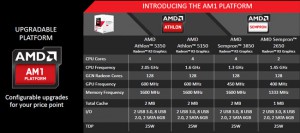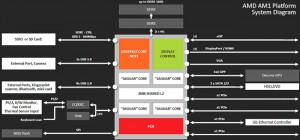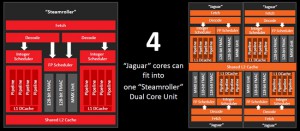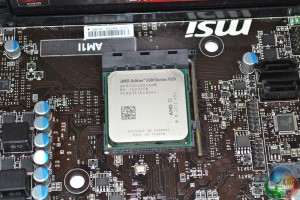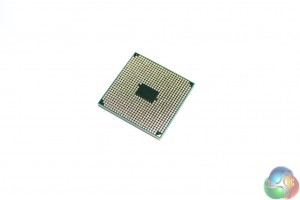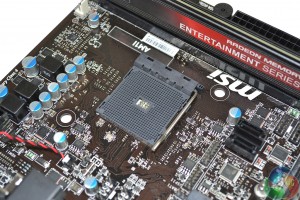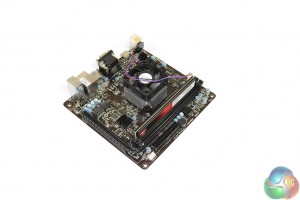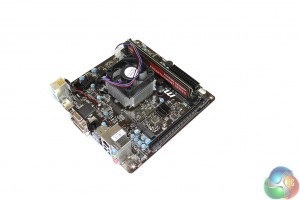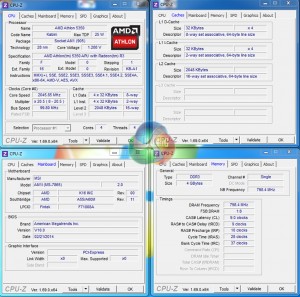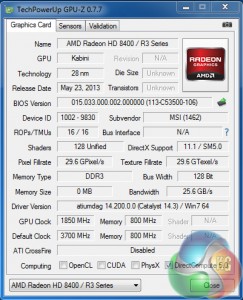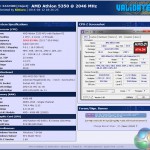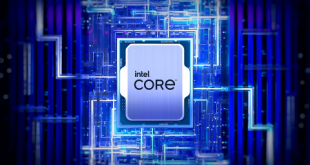The Kabini APU
Most of the important information relating to the Kabini APUs and AM1 platform was covered in our ‘AMD AM1 launch – Kabini brings APU to the masses' article which can be read over here.
To check out the market positioning and reason why Kabini is being launched, follow the above link.
As of launch, Kabini is available in the form of four different APUs; a pair of Athlons and a duet of Semprons.
The most noticeable differences between the Athlon and Sempron APUs comes in the form of clock speeds. Both Athlon chips feature a higher CPU frequency than their Sempron siblings, and GPU frequency is given a noticeable boost too.
Propping up the Kabini pile is the sole dual-core chip of the bunch – the Sempron 2650. The drop in core count is minimally offset by a 150MHz CPU frequency boost, but a £26 price tag also sees AMD cutting the cache capacity by 50%, reducing GPU clock speed to 400MHz, and lowering RAM support to 1333MHz.
Each of the APUs has a clear place in the market. For example, budgeting down to the Athlon 5150, from the 5350, results in a 450MHz drop (22%) in CPU frequency with a cost saving of around £5 (12.5%).
According to AMD, Kabini is the company's ‘System in a Socket' APU. The above system diagram shows exactly what that claim means – all of the typical computing workloads and tasks, including PCIe and storage channels, are handled via the APU.
The system-on-chip (SoC) design allows motherboard vendors to keep board prices to a minimum. There's no forking out for an expensive chipset (and the under-the-hood connectivity and power links).
Kabini shouldn't be a big power guzzler, either. AMD's press slides show that Kabini's Jaguar cores require about 50% of the die space that their desktop – Steamroller – siblings dictate.
The APU that AMD is sampling for Kabini's launch is a current flagship – the Athlon 5350. On the CPU side, the Athlon 5350 features four Jaguar cores clocked in at 2.05GHz and 2MB of cache. The APU's graphics system consists of Radeon R3-level performance with the embedded GPU operating at 600MHz core frequency and sporting 128 GCN cores.
All of this CPU and GPU hardware translates into a respectable 25W TDP – a number which will grasp the attention of low-power HTPC and home server users. A TDP of 25W is not a particularly big deal, in itself. But considering that Kabini is a SoC part, 25W of power becomes a more impressive figure.
According to AMD, the Athlon 5350 APU's most relevant competitor is Intel's Pentium J2900.
The big fuss being made about Kabini is the fact that it brings a socketed SoC to the entry-level. Intel's competing models, such as the Celeron J1800/1900 and Pentium 2900, are typically found built into their motherboard, hence upgrade paths are extremely limited.
Kabini, the AM1 platform, and the FS1b socket change that. Entry-level users are given a drop-in chip that can be changed to better suit one's needs at a later date. Other sacrifices don't have to be made, either – Kabini APUs support 64-bit operating systems.
Graphics horsepower is the other key point for Kabini. Intel's competing models typically sacrifice GPU performance in favour of CPU power. This makes anything more graphically strenuous than very basic gaming a no-go. With its Radeon R3 graphics, based around 128 GCN cores, Kabini aims to make basic gaming capabilities a reality for entry-level components.
The AM1 platform
If Kabini APUs are the heart of the AM1 platform, FS1b socket motherboards are the backbone (yes, that made sense in my head). Available in mini-ITX and mATX variants from the usual vendors, current retail prices for AM1 motherboards start at less than £25.
At 25W TDP, passive cooling is certainly possible, although it may dictate a larger CPU cooler, hence limiting feasibility inside a mini-ITX chassis. Our sample made use of a basic heatsink and fan unit. The AM1 platform utilises a new mounting system which resembles Intel's push-pin mechanism. It would be fair to assume that cooling manufacturers will launch their AM1-compatible heat exchangers in the coming weeks and months.
Despite the single-channel memory support, motherboard vendors are typically implementing a pair of DIMM slots allowing up to 32GB of memory (when 16GB modules become commonplace) to be installed. Speed is capped at 1600MHz (or 1333MHz for the Sempron 2650) by virtue of the APUs' memory controllers.
So what exactly does a user get from the AM1 platform? Well, motherboard dependent, there's typically a pair of USB 3.0 ports, up to 8 USB 2.0 ports, two SATA 6Gbps connectors, Gigabit Ethernet (via a PCIe lane), and legacy connections.
Finishing off the connectivity options are up to three deployable PCIe x1 links and a PCIe x4 port that can be used to house a discrete GPU. Oh, and don't expect to take advantage of the dual-graphics (Hybrid CrossFire) solution that exists on the FM2+ platform; AMD confirmed that the AM1 platform does not support Hybrid CrossFire operation.
Display connectivity consists of DisplayPort 1.2, HDMI, DVI, and VGA links, with support for resolutions up to 4k x 2k. Up to two outputs can be utilised simultaneously. Wireless display connectivity is also provided.
AMD's Video Codec Engine (VCE) and Universal Video Decoder (UVD) offer added supports for mainstream video codecs, such as DivX and H.264.
One of the most noticeable specifications is Kabini's single-channel memory controller that tops out at a maximum of 1600MHz. Performance of the onboard GPU is directly related to the memory subsystem. Single-channel memory operating at 1600MHz could be a sizeable bottleneck.
It is currently unclear whether any motherboard vendors will offer BIOS implementations that allow for adjustments to the CPU's base frequency, hence the platform's memory speed.
CPU-Z reports the Athlon 5350 APU's core voltage as 1.288V. Under a low-load state (idle) the 28nm chip's voltage hovers around the 1.28V mark.
GPU-Z reports a number of the Radeon R3 graphics system's specifications, although the frequency readings are questionable to say the least.
CPU-Z validation can be viewed here.
 KitGuru KitGuru.net – Tech News | Hardware News | Hardware Reviews | IOS | Mobile | Gaming | Graphics Cards
KitGuru KitGuru.net – Tech News | Hardware News | Hardware Reviews | IOS | Mobile | Gaming | Graphics Cards


